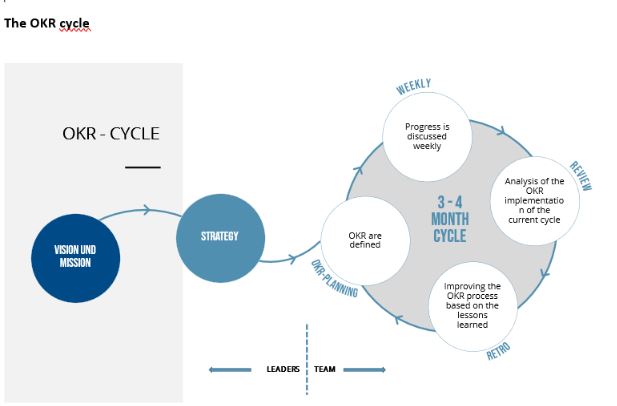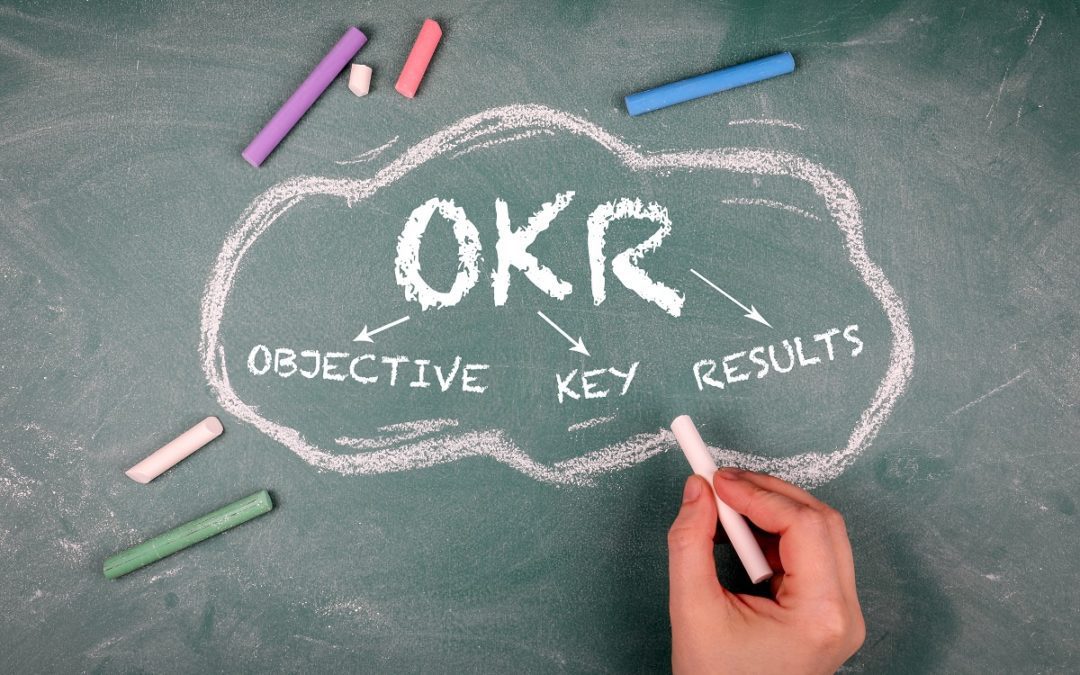– an agile framework to pursue and achieve longer-term business goals
In many organisations, management teams are faced with the problem of having to deal with increasingly complex structures and fast-moving markets. Working with OKR offers a way to reduce complexity through high self-organisation and fast cycles, focusing on what is essential, in line with the company’s vision. In the following article, we present crucial points of the OKR framework and briefly overview its meaning.
OKR is an agile goal management system developed by Intel CEO Andy Grove in the 1970s. He further developed Management by Objectives (MbO), which Peter Drucker developed. It has also been used at Google since 1999 and has thus gained a great deal of popularity.
OKRs are used to manage strategic corporate goals. In parallel, operational goals are managed via key performance indicators.
Definition of terms:
- Objectives answer the question: What do I want to achieve?
Objectives are qualitative descriptions of this goal. They are short, inspiring and appealing. Objectives have the character of a vision for a cycle for a team. - Key Results answer the question: How do I measure the Objective, or how do I know that I have achieved the desired goal? Therefore, a Key Result describes an achieved result and not a performance. Thus, the Key Result is the means to an end that supports me in achieving my set goal (Objective).
When is an organisation ready to work with OKR?
OKR is not a classic method with rules to be applied. Instead, it is a collection of principles that every company adapts and uses leeway.
The employees must know the company’s strategic goals and support them. In addition, employees need the ability to work with aims. They need to be experts in setting and achieving goals. At the same time, it requires a leadership culture that has high confidence in the employees’ abilities and allows the employees and teams to work independently on goals.
When a company works with OKR, all teams know the goals of the others. The units are encouraged to support each other in formulating their objectives, to ensure that everyone is working in the same direction. Of course, this is only possible if the teams know the company’s vision, values and mission statement and live by them.
The OKR cycle

At the corporate level, the management formulates the corporate vision, the corporate mission, corporate values, and the company’s strategy. Usually, the corporate vision focuses on about 3 – 5 years. In addition, the management defines MOALs, which are strategic mid-term goals with a focus of 1 year. The management presents the MOALs to the team.
Based on the MOALs, the teams define their objectives and the corresponding key results. Depending on the company’s size, we recommend defining not more than five objectives. If the company is vast, define five objectives per area that contribute to the company goals.
In a collaborative planning process, which takes a few hours in small companies and should not take more than three hours per team during one week in large companies, objectives are formulated and coordinated company-wide. After this step, the first cycle of 3 – 4 months begins.
The teams track their progress in weekly meetings. The focus in these meetings should be on what it takes to remove any obstacles. At the end of the cycle, there is a review of the results and the process.
What are the challenges of working with OKR?
The biggest challenge from our experience is that organisations are struggling with the issue of complexity but are still “trapped” in a robust hierarchical orientation in terms of corporate structure. In such constellations, it would be necessary for the leadership team to learn to build a more agile mindset and empower employees to work in a self-organised way. Without the ability to work with very self-organised teams, we explicitly advise against working with OKR.
Another area of danger is when companies get the idea of managing all their goals through OKR. We recommend driving operational objectives in a KPI system with classic operational reporting.
Otherwise, the OKR framework becomes too confusing and loses the desired focus on critical strategic goals.
simply put:
“Drive the business” (the day-to-day business) is managed via KPIs, “Change the business” (the management of strategical projects) via OKRs.


Recent Comments